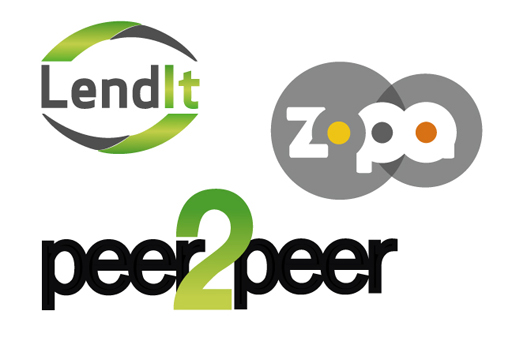2.4.1 Investing in peer-to-peer products
Beleaguered savers who have seen returns on their accounts fall to miserly levels in the last two years, to levels below the rate of price inflation, are being increasingly tempted by the burgeoning alternative investment product of peer-to-peer (P2P) lending. Many P2P providers have emerged in recent years including Zopa, Landbay, Funding Circle, Ratesetter and Wellesley & Co.
This growing market involves savers pooling their funds with other investors to on-lend to individuals and businesses. The P2P providers undertake the credit checks on those borrowing from the schemes. There are no banks or other financial intermediaries. The returns offered by investing in a P2P pool are attractive relative to those on ordinary savings accounts. In mid-2014, a 5-year fixed deal offered savers a pre-tax return of 5.2% p.a. – comfortably in excess of the best returns then offered by the best of the fixed-rate accounts of the same term of roughly 3.25% p.a. The attractions of investing in P2P accounts may be further enhanced if, as expected, they become allowable for inclusion from this year in New ISA (NISA) accounts, where returns are free of tax. Investors can also link their lending to their personal and ethical fads with, for example, investments in eco-friendly wind turbine projects available through P2P lenders.
The attractions of this alternative investment have seen this form of lending growing to £1.48 billion since 2010, according to the latest data provided by the Peer2Peer Finance Association.
Note that peer-to-peer lending is different from crowdfunding. Peer-to-peer lending provides loans, whereas crowdfunding provides equity finance to companies. In effect, crowdfunders are buying shares in the companies they are lending to.
Although P2P is regulated by the Financial Conduct Authority (FCA), it does have risks that savers need to be aware of. Risks certainly exist – why else would the returns markedly exceed those on no-risk investments like National Savings & Investments (NS&I) products? The key risk is of defaults by those who have borrowed from P2P funds – although those managing the funds mitigate this by spreading the funds invested by savers across a number of borrowers. Even if the money lent is fully recovered from a defaulting borrower, there is likely to be a long wait to receive back the funds you invested. To date, defaults have been low – perhaps helped by the low-interest environment for those borrowing via P2P. Zopa’s default rate has been quoted as being as low as 0.01%, while Ratesetter’s has been 0.35%.
Another risk is that the taxation of P2P investments is applied on returns prior to the deduction of bad debts. So, if the return prior to defaults is 8%, while that after defaults are accounted for is 5%, then taxation of investment income applies to the 8% return, not the 5% actually received by the investor. This could change if, as noted above, P2P products can be bought as NISA investments. NISA interest earnings are exempt from taxation.
Another key factor to bear in mind is that P2P investments are not covered by the Financial Services Compensation Scheme (FSCS), exposing investors to a material risk of loss if a P2P provider defaults.
P2P offer an interesting alternative outlet for savers trying to boost their returns in this era of historic low interest rates. The product should, though, be treated with care. Attention to the small print and the historic performance of the providers is certainly warranted.
So, P2P lending can perhaps be looked at as an investment diversification option – but not as a home for your entire savings or pension fund.

